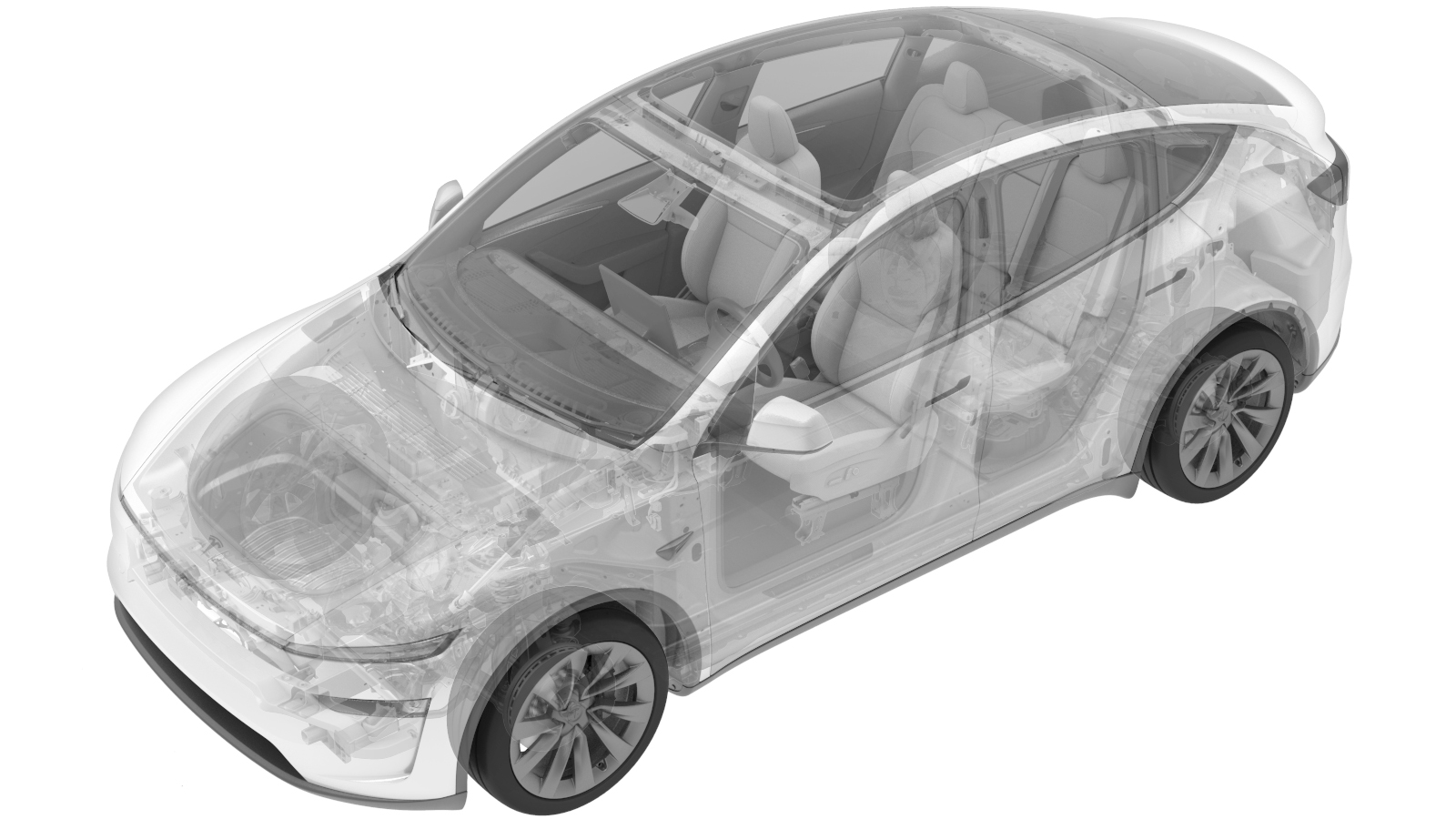HV Harness - Charge Port Busbar (Remove and Replace)
 Correction code
4450010302
0.84
NOTE: Unless otherwise explicitly stated in the procedure, the above correction code and FRT reflect all of the work required to perform this procedure, including the linked procedures. Do not stack correction codes unless explicitly told to do so.
NOTE: See Flat Rate Times to learn more about FRTs and how they are created. To provide feedback on FRT values, email ServiceManualFeedback@tesla.com.
NOTE: See Personal Protection to make sure wearing proper PPE when performing the below procedure.
NOTE: See Ergonomic Precautions for safe and healthy working practices.
Correction code
4450010302
0.84
NOTE: Unless otherwise explicitly stated in the procedure, the above correction code and FRT reflect all of the work required to perform this procedure, including the linked procedures. Do not stack correction codes unless explicitly told to do so.
NOTE: See Flat Rate Times to learn more about FRTs and how they are created. To provide feedback on FRT values, email ServiceManualFeedback@tesla.com.
NOTE: See Personal Protection to make sure wearing proper PPE when performing the below procedure.
NOTE: See Ergonomic Precautions for safe and healthy working practices.
- 2025-06-04: Changed topic title, correction code, FRT and added instruction to zero adjust the Hioki resistance meter prior to measurement.
- 1076921-00-B FLUKE DIGITAL MULTIMETER 1507
- 1130480-02-B Slim Test Probes, CAT III 1000V
- 1076927-00-A HIOKI RM 3548
- 1076928-00-A TEST PROBES - HIOKI 9461
- 1083188-01-B Digital Multimeter Unit, EXTECH 355
Only
technicians who have completed all required certification courses are permitted to
perform this procedure. Tesla recommends third party service provider technicians
undergo equivalent training before performing this procedure. For more information on
Tesla Technician requirements, or descriptions of the subject matter for third parties,
see HV Certification Requirements. Proper personal protective equipment (PPE) and insulating HV
gloves with a minimum rating of class 0 (1000V) must
be worn at all times a high voltage cable, busbar, or fitting is handled. Refer to Tech Note TN-15-92-003, High Voltage Awareness
Care Points
for additional safety
information.
Remove all jewelry (watches, bracelets, rings, necklaces, earrings, ID tags, piercings, etc.) from your person, and all objects (keys, coins, pens, pencils, tools, fasteners, etc.) from your pockets before performing any procedure that exposes you to high voltage.
Proper Personal Protective Equipment (PPE) is required to perform this procedure:
- High Voltage (HV) insulating gloves
- Leather glove protectors
- High voltage glove tester
- Safety glasses
- Electrical hazard rated safety shoes
A glove inflator is the only recommended way to test HV gloves. Both HV gloves must pass testing before beginning this procedure. If either glove does not pass the air check, discard the pair.
Make sure that the HV gloves are not expired. HV gloves can be used up to 12 months after the testing date printed on the glove, but only 6 months after first use even if the gloves are still within the 12-month period.
Torque Specifications
| Description | Torque Value | Recommended Tools | Reuse/Replace | Notes |
|---|---|---|---|---|
| Charge port controller |
 10 Nm (7.4 lbs-ft) |
|
Reuse | |
| Fasteners (X2) securing charge port busbar to charge port |
 9 Nm (6.6 lbs-ft) |
|
Reuse | |
| Fastener (X1) securing busbar cover access door |
 9 Nm (6.6 lbs-ft) |
|
Reuse | |
| Bolts (X2) securing charge port busbar kit to HV header |
 9 Nm (6.6 lbs-ft) |
|
Reuse |
Remove
- Open the trunk.
- Open all four doors and lower all windows.
- Remove the 2nd row lower seat cushion. See Seat Cushion - 2nd Row (Remove and Replace).
- Disconnect the LV power. See LV Power (Disconnect and Connect) (Modify).
- Perform Vehicle HV Disablement Procedures. See Vehicle HV Disablement Procedure.
- Remove the LH lower C pillar trim. See Trim - C-Pillar - Lower - LH (5-Seat) (Remove and Replace).
- Remove the trunk sill trim. See Trunk Sill Lower Trim (Remove and Replace).
- Remove the rear trunk load floor. See Bracket - Load Floor - LH (Remove and Replace).
- Remove the LH trunk side trim. See Trunk Side Trim LH - Rear Under Body (Remove and Replace).
- Put on HV insulating gloves and leather over gloves.
-
Disconnect charge port controller.
TIpUse of the following tool(s) is recommended:
- 10 mm socket
- Cordless Ratchet/Impact Driver
-
Disconnect DC logic connector from charge port assembly.
-
Remove charge port safety cap.
-
Remove fasteners (X2) securing charge
port busbar to charge port and remove busbar leads from studs.
NoteNuts have captured washers, you do not need to remove the bus bars, only clearance for charge port assembly.TIpUse of the following tool(s) is recommended:
- 10 mm socket
- Cordless Ratchet/Impact Driver
-
Remove the bolt that closes the charge
port busbar access door at the ancillary bay HV header, and then open the access
door.
TIpUse of the following tool(s) is recommended:
- Insulated
tools:
- Extension 1/4 Dr. Wobble 10.5"
- Ratchet/torque wrench
- 10 mm deep socket
- Electrical Protective Gloves
- Insulated
tools:
-
Remove the bolts (x2) that attach the
charge port busbars to the HV header.
TIpUse of the following tool(s) is recommended:
- 10 mm deep socket
- Flex head ratchet/flex head torque wrench
- Ratchet/torque wrench
- Electrical Protective Gloves
-
Release LH body harness from rear body and move aside.
-
Lift busbar kit connector to remove
from HV header.
NoteWiggle the connector back and forth to ease removal.
-
Remove HV busbar assembly from
vehicle
Install
-
With assistance, position
the charge port busbars for installation by inserting the busbars through
the trunk.
NoteManeuver the busbars through the body harness, rotating the busbars as needed.
-
Clean the HV header contact surface with an IPA wipe, and allow to dry for
1 minute.
-
Apply 2 drops of Penetrox A-13 about 5mm in diameter onto either side of
the holes on both leads of the HV header, and then spread evenly to ensure
the contact surface is fully covered.
-
With assistance, align the
guide tabs on the HV header with the charge port busbar connector, and then
install the busbar connector on the HV header.
TIpGently lift the rear half of the busbars to aid installation of the busbars on the HV header.NoteIf positioning the busbars requires excessive force, the busbars might be bent. Inspect for damage and replace the busbars if necessary.
-
Install the bolts (x2) that attach the
charge port busbars to the HV header.
 9 Nm (6.6 lbs-ft)TIpUse of the following tool(s) is recommended:
9 Nm (6.6 lbs-ft)TIpUse of the following tool(s) is recommended:- 10 mm deep socket
- Flex head ratchet/flex head torque wrench
- Ratchet/torque wrench
- Electrical Protective Gloves
- Perform a zero adjust of the Hioki resistance meter. See Resistance Meter (Zero Adjust).
-
At the ancillary bay, use the
Hioki resistance meter to measure the resistance between the charge port
busbar lead and the ancillary bay HV header bolt head. Also perform this test on
the other lead and bolt head.
NoteThe acceptable resistance is between 0.050 mΩ (50 μΩ) and 0.195 mΩ (195 μΩ). If the measured resistance is above 0.195 mΩ (195 μΩ), there is too much resistance in the High Voltage joint. Remove the fastener, clean areas with isopropyl alcohol, install fastener back and test again, as appropriate.NoteIf the resistance is lower than 0.050 mΩ (50 μΩ), reposition the probes and measure again. If after 4 attempts the resistance is consistently lower than 0.050 mΩ (50 μΩ), the test has passed; continue to the next step.
-
Close the charge port busbar access
door, and then install the bolt on the access door.
 9 Nm (6.6 lbs-ft)TIpUse of the following tool(s) is recommended:
9 Nm (6.6 lbs-ft)TIpUse of the following tool(s) is recommended:- Insulated
tools:
- Extension 1/4 Dr. Wobble 10.5"
- Ratchet/torque wrench
- 10 mm deep socket
- Electrical Protective Gloves
- Insulated
tools:
-
Install LH body harness onto rear body.
-
Clean the charge port busbar contact surface with IPA wipes, and then allow
1 minute to dry.
-
Install charge port busbar leads to
charge port assembly.
 9 Nm (6.6 lbs-ft)NoteSkip this step if installing a new charge port assembly.TIpUse of the following tool(s) is recommended:
9 Nm (6.6 lbs-ft)NoteSkip this step if installing a new charge port assembly.TIpUse of the following tool(s) is recommended:- 10 mm socket
- Cordless Ratchet/Impact Driver
-
Install charge port safety cap.
-
Connect DC logic connector from charge port assembly.
-
Install charge port controller.
 10 Nm (7.4 lbs-ft)TIpUse of the following tool(s) is recommended:
10 Nm (7.4 lbs-ft)TIpUse of the following tool(s) is recommended:- 10 mm socket
- Cordless Ratchet/Impact Driver
- Install the trunk side trim. See Trunk Side Trim LH - Rear Under Body (Remove and Replace).
- Install the LH trunk load floor bracket. See .
- Install the trunk sill trim. See Trunk Sill Lower Trim (Remove and Replace).
- Install the LH lower C pillar trim. See Trim - C-Pillar - Lower - LH (5-Seat) (Remove and Replace).
- Connect the LV power. See LV Power (Disconnect and Connect) (Modify).
- Install the LH 2nd row seat cushion bracket. See .
- Move the LH and RH front seats back to their original position.
- Raise all the windows and close all the doors.
- Close the trunk.